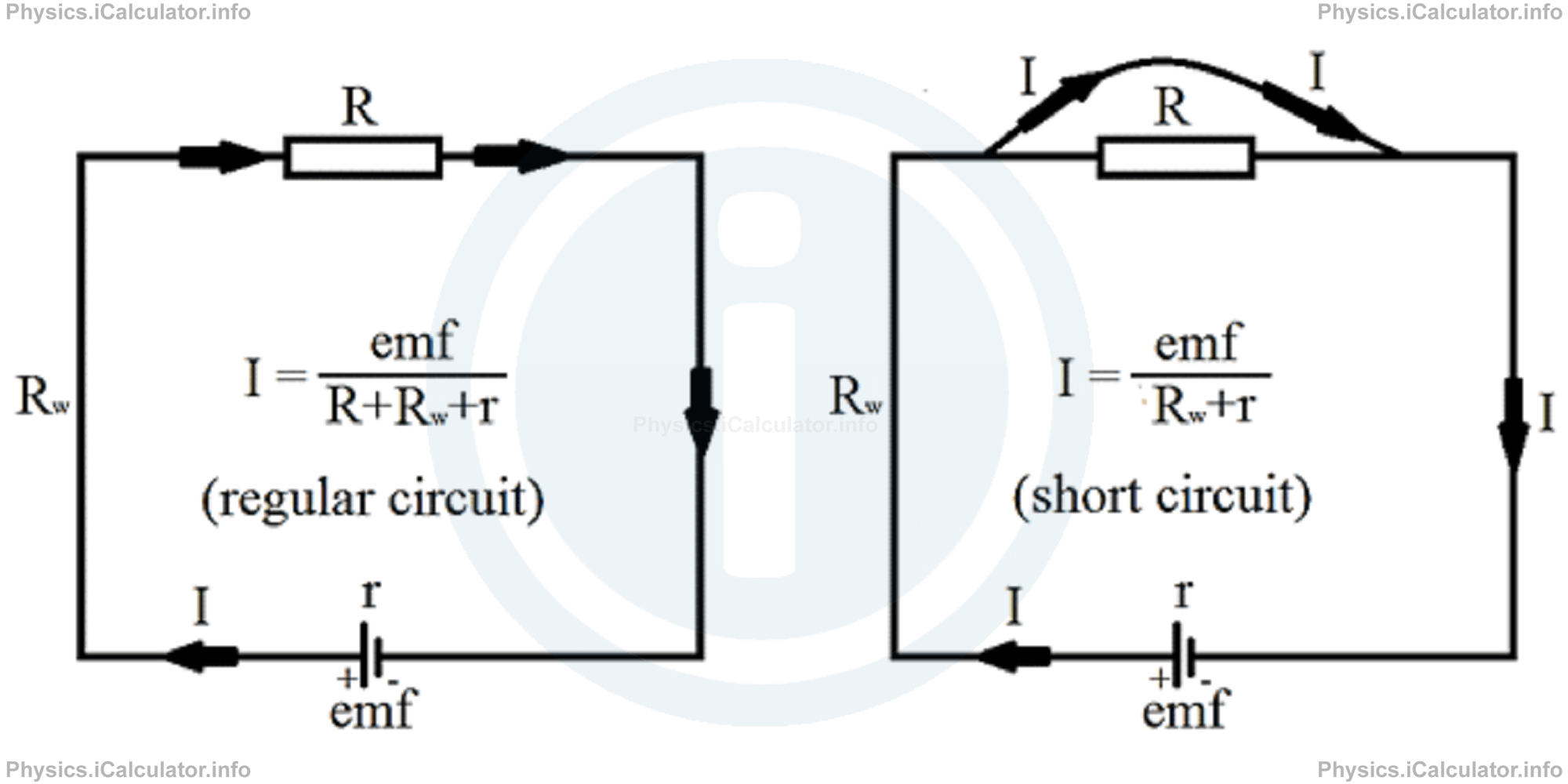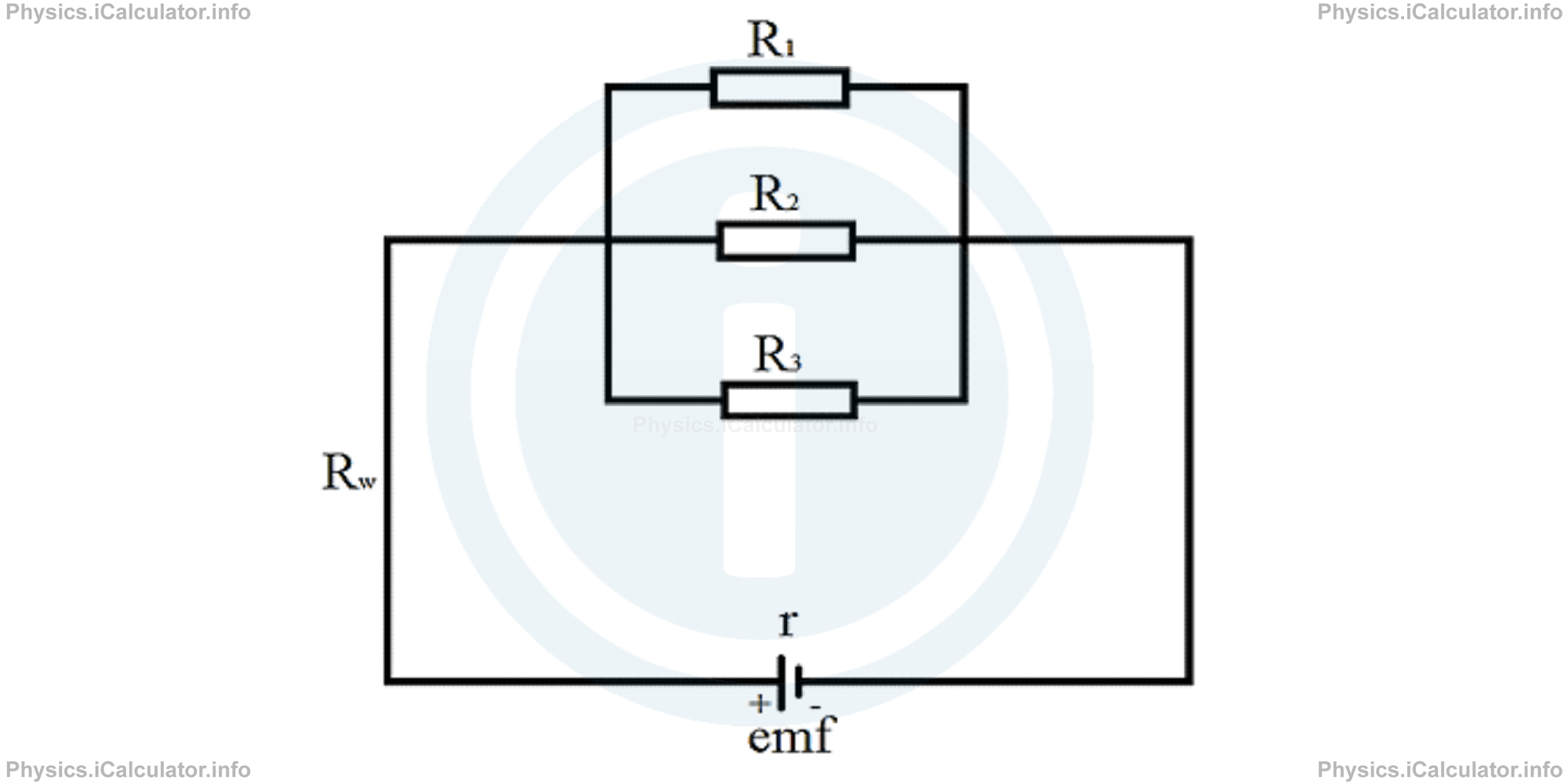Menu
Physics Lesson 15.4.5 - Short Circuits
Please provide a rating, it takes seconds and helps us to keep this resource free for all to use
Welcome to our Physics lesson on Short Circuits, this is the fifth lesson of our suite of physics lessons covering the topic of Electric Circuits. Series and Parallel Circuits. Short Circuits, you can find links to the other lessons within this tutorial and access additional physics learning resources below this lesson.
Short Circuits
It is a known fact that the electric current chooses the easiest path to flow. This path is not meant to be the shortest one. When we bypass a resistor through an extra conducting wire added in that part of the circuit, this action brings the formation of a short circuit, which is a circuit with a very low resistance (just the resistance of the conductor and that of the source), and which brings an increase of the current in the circuit. In other words, a short circuit "cancels" the effect of the resistance it bypasses. Look at the figure.

Example 3
An electric circuit composed by three resistors R1 = 18 Ω, R2 = 12 Ω and R3 = 9 Ω connected in parallel to a 24 V battery is shown in the figure below.

The resistance of wire is Rw = 0.5 Ω and that of battery is r = 1 Ω.
Calculate the current in the main branch if:
- the circuit is in the actual state
- the first resistor cuts in two pieces which separate from each other leaving a gap
- An additional piece of wire is used to bypass the first resistor as shown in the figure in theory.
Solution 3
a. First, we have to calculate the equivalent resistance of the parallel branch. We have,
= 1/18 + 1/12 + 1/9
= 2 + 3 + 4/36
= 9/36
Thus,
= 4Ω
The total resistance in the circuit is
= 4Ω + 0.5Ω + 1Ω
= 5.5Ω
Therefore, the current in the main branch is
= 24 V/5.5 Ω
= 4.36 A
b. If the first resistor is faulty and cuts in two pieces, no current flows through it. As a result, only the other two resistors are in use. We use the same procedure as in part (a) to calculate the current in the main branch, i.e.
= 1/12 + 1/9
= 3 + 4/36
= 7/36
Thus,
=5.14 Ω
The total resistance in the circuit is
= 5.14 Ω + 0.5Ω + 1Ω
= 6.64Ω
Therefore, the current in the main branch is
= 24 V/6.64 Ω
= 3.61 A
c) If we connect a piece of wire to bypass the first resistor, all the other resistors are bypassed as well. Therefore, only the resistance of wire and battery are to be considered. We have
= 0.5Ω + 1Ω
= 1.5Ω
Therefore, the current in the main branch is
= 24 V/1.5 Ω
= 16 A
As you see, when a short circuit does occur, the current in the main branch is much higher than usual. Therefore, we must avoid such situations as a short circuit may cause damage to electrical appliances. To protect the appliances from such unexpected situations, producers usually install some inexpensive devices called fuses, which are connected in series with them. A good fuse holds a maximum current up to 0.5 A higher than the operating current of the appliance. Thus, for example, if an appliance operates at 8A current, a fuse with a maximum operating capacity of 8.5 A is installed before the appliance. In cases of short circuits when the current in the circuit becomes much higher than the operating current of the appliance, the fuse connected in series to it breaks first, protecting in this way the corresponding appliance as the current flow stops.
You have reached the end of Physics lesson 15.4.5 Short Circuits. There are 5 lessons in this physics tutorial covering Electric Circuits. Series and Parallel Circuits. Short Circuits, you can access all the lessons from this tutorial below.
More Electric Circuits. Series and Parallel Circuits. Short Circuits Lessons and Learning Resources
Whats next?
Enjoy the "Short Circuits" physics lesson? People who liked the "Electric Circuits. Series and Parallel Circuits. Short Circuits lesson found the following resources useful:
- Short Feedback. Helps other - Leave a rating for this short (see below)
- Electrodynamics Physics tutorial: Electric Circuits. Series and Parallel Circuits. Short Circuits. Read the Electric Circuits. Series and Parallel Circuits. Short Circuits physics tutorial and build your physics knowledge of Electrodynamics
- Electrodynamics Revision Notes: Electric Circuits. Series and Parallel Circuits. Short Circuits. Print the notes so you can revise the key points covered in the physics tutorial for Electric Circuits. Series and Parallel Circuits. Short Circuits
- Electrodynamics Practice Questions: Electric Circuits. Series and Parallel Circuits. Short Circuits. Test and improve your knowledge of Electric Circuits. Series and Parallel Circuits. Short Circuits with example questins and answers
- Check your calculations for Electrodynamics questions with our excellent Electrodynamics calculators which contain full equations and calculations clearly displayed line by line. See the Electrodynamics Calculators by iCalculator™ below.
- Continuing learning electrodynamics - read our next physics tutorial: Kirchhoff Laws
Help others Learning Physics just like you
Please provide a rating, it takes seconds and helps us to keep this resource free for all to use
We hope you found this Physics lesson "Electric Circuits. Series and Parallel Circuits. Short Circuits" useful. If you did it would be great if you could spare the time to rate this physics lesson (simply click on the number of stars that match your assessment of this physics learning aide) and/or share on social media, this helps us identify popular tutorials and calculators and expand our free learning resources to support our users around the world have free access to expand their knowledge of physics and other disciplines.
Electrodynamics Calculators by iCalculator™
- Amount Of Substance Obtained Through Electrolysis Calculator
- Charge Density Calculator
- Electric Charge Stored In A Rc Circuit Calculator
- Electric Field In Terms Of Gauss Law Calculator
- Electric Power And Efficiency Calculator
- Electron Drift Velocity Calculator
- Equivalent Resistance Calculator
- Force Produced By An Electric Source Calculator
- Joules Law Calculator
- Ohms Law Calculator
- Potential Difference In Rc Circuit Calculator
- Resistance Due To Temperature Calculator
- Resistance Of A Conducting Wire Calculator